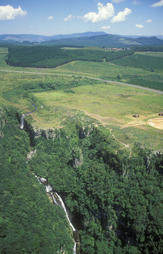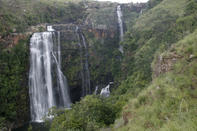Forestry Town

The vibrant village of Graskop started life as a forestry town, but its contemporary heart has been kick-started by a healthy dose of adrenaline. It is situated at the heart of the Panorama Route in Mpumalanga, making it a favourite stopover for tourists exploring the province.
Abundant accommodation, arts, crafts and curio shops, great restaurants, you definitely won’t be sorry you came. While travelling the Panorama Route, visitors can enjoy stunning views of the beautiful Graskop Gorge, into which the Graskop Waterfall flows. This is a wonderful example of the areas amazing natural landscapes.
Graskop was named after the treeless grassland that dominated the area in the past. Today, much of the area is cultivated, although there are areas where indigenous forests lie.
Also known as the Window of Mpumalanga, Graskop developed around a mining settlement which sprung up close to the Escarpment edge in the 1880s.
The roots of the town can be traced all the way back to 1837, when Voortrekkers passed through the region in search of an ox-wagon route to Delagoa Bay (Maputo).
It was however only in 1914 that it was declared a town, serving as a stop along the railway between the booming gold-mining dorp of Pilgrim's Rest and Nelspruit.
Scenic Wonders

A full gamut of scenic wonders lie within an easy drive from Graskop, so whether it is a tumbling cascade, deep-forest trail or breath-taking panorama of the many waterfalls, you can get there in a jiffy. If you can tear yourself away from all the town’s other attractions, that is.
Did You Know: Graskop is an important forestry town and tourism centre. The patches of grassland around the town are an important breeding area for the blue swallow, an endangered species in South Africa. As at June 2012, there were fewer than 38 breeding pairs of blue swallows left in South Africa, with only about a 1 000 pairs globally. Graskop is one of this species’ preferred habitats.
By Jacques Marais